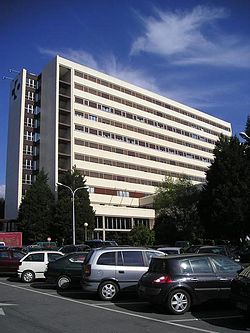This article needs additional citations for verification .(November 2017) |
| Osakidetza-Servicio Vasco de Salud | |
 | |
 Osakidetza headquarters, Bilbao. | |
| Health Care Service overview | |
|---|---|
| Formed | 1984 |
| Preceding Health Care Service |
|
| Type | Public Provider |
| Jurisdiction | Basque Government |
| Headquarters | Bilbao, Biscay, Basque Country |
| Health Care Service executive |
|
| Parent department | Department of Health |
| Website | osakidetza |
Osakidetza-Basque Health Service [1] is the institution created in 1984 in charge of the public healthcare system in the autonomous community of the Basque Country, belonging to the National Health System, created in 1986 and that substituted INSALUD.
Contents
The transfer of responsibilities to the Basque government in matters of healthcare was done during the administration of Carlos Garaikoetxea as Lehendakari, after the approval of the Statute of Autonomy of the Basque Country in 1979. It is a public healthcare service with a great number of facilities that take care of the needs of the Basque citizens. Its chief is the Secretary of Health of the Basque Government.





